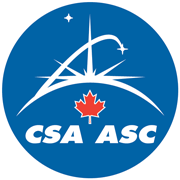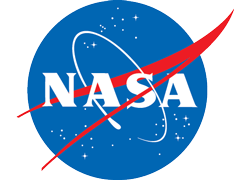- Official Photographs posted.
- JSTARS and CJRS Special issues deadline September 30, 2014.
The organizing committee would like to thank you for your contribution to the success of IGARSS 2014 / 35th CSRS. We hope you had a very informative and enjoyable week in Quebec City. Have a good and safe trip home.
Au revoir
Welcome

On behalf of the Local Organizing Committee it gives me great pleasure to welcome you to the joint International Geoscience and Remote Sensing Symposium (IGARSS 2014) / 35th Canadian Symposium on Remote Sensing (35th CSRS). This partnership between the IEEE Geoscience and Remote Sensing Society (GRSS) and the Canadian Remote Sensing Society / Société canadienne de télédétection (CRSS-SCT) builds on a fine tradition of collaboration that began over 25 years ago. We anticipate welcoming over 1,800 attendees (including more than 500 graduate students) from the remote sensing and geoscience communities of 70 countries, and we are pleased that you will be part of the success of IGARSS 2014 / 35th CSRS.
The symposium theme is “Energy and our Changing Planet”. The development of new and renewable sources of energy in the context of a changing planet is a critical issue throughout the world.
IGARSS 2014 / 35th CSRS will begin on Monday morning, July 14, with a plenary session that will include words of welcome, award presentations and keynote speeches on how current and future remote sensing technologies can be used by energy resource managers around the world. Our four keynote speakers are Dr. Gaétan Lantagne, Hydro-Québec Research Institute (IREQ - Canada); Dr. Matthieu Le Lay, Électricité de France; Dr. Stan Benjamin, NOAA Earth Systems Research Laboratory (USA); and Prof. Trevor Gaunt, University of Cape Town (South Africa). Their talks will be preceded by welcome addresses from General (Retired) Walter Natynczyk, President, Canadian Space Agency (CSA); Dr. Brian Gray, Assistant Deputy Minister, Earth Sciences Sector, Natural Resources Canada; Dr. Marina Ruggieri, Director, IEEE Division IX; Dr. Melba Crawford, President, IEEE GRSS; and Dr. Anne Smith, Vice-President, CRSS-SCT. Two prestigious CRSS-SCT awards will be presented, followed by the GRSS Awards Ceremony hosted by Dr. Werner Wiesbeck.
The IGARSS 2014 / 35th CSRS week features high-quality peer-reviewed technical sessions, social events, awards banquet, network luncheons for students, industry, various committees, and Society meetings, and of course the traditional IGARSS soccer tournament. Additionally, you have the opportunity to attend tutorials all day on July 13, while on July 10-11 the GRSS Summer School was attended by 50 graduate students. We hope these will all provide excellent networking opportunities. As well, we encourage you to visit Québec City, the only walled city north of Mexico City. Local and regional tours have also been made available especially for IGARSS 2014 / 35th CSRS attendees.
We invite you to visit the exhibition area adjacent to the coffee break area and posters, where over 25 exhibitors are showcasing their capabilities, sensors, software, and services. The exhibition area opens on Monday, July 14 at 17:20 and closes on Thursday, July 17 at 16:00. At the IEEE-GRSS/CRSS-SCT booth you will have the opportunity to meet two award-winning high school students, William Gadoury (Québec) and Victor Ling (Ontario). William’s project, entitled Born from the Sky, was selected from those presented at the Québec Provincial Science Fair, and Victor’s, entitled Unlocking the Geology of Mars, from those at the Canada-wide Science Fair.
IGARSS 2014 / 35th CSRS in Québec City would not have become a reality without the support of the IEEE GRSS Administrative Committee (AdCom) and the CRSS-SCT Executive over the last four years, and the dedication of a team of over 20 volunteers forming the Local Organizing Committee, supported by two professional conference organizers, Conference Management Services (CMS, Texas) and Conferium Inc. (Québec). Many more GRSS and CRSS–SCT volunteers participated on the Technical Program Committee as well as reviewing abstracts and arranging all the sessions.
The Local Organizing Committee has worked hard to ensure a diverse and high-quality program of technical sessions, professional activities and social events. There have been many meetings and teleconferences and much work, but there has been a lot of laughter too. In particular, I would like to acknowledge the immense contributions of the three co-chairs of the Technical Program: Dr. Josée Lévesque, Dr. Jean-Marc Garneau, and Dr. Ellsworth LeDrew.
The Local Organizing Committee would like to thank our corporate partners Hydro-Québec, ABB Analytical - Measurement Products, MacDonald, Dettwiler and Associates Ltd., and Intergraph, and our institutional partners, the Canadian Space Agency, Tourisme Québec, the City of Québec and the Institut national de la recherche scientifique (INRS) for their financial support and contributions to the technical program.
I am looking forward to all the presentations as you share your most recent research results, as well as the many social and networking opportunities.
Welcome to Québec City! We wish you an educational and most enjoyable week.
Monique Bernier
General Chair, IGARSS 2014 / 35th CSRS
About the image at the top of the web page:
Québec City and the St-Lawrence River over the seasons, as seen by RADARSAT-2.
The first image is a Pauli decomposition (red=HH-VV, green=HV, blue=HH+VV) of a RADARSAT-2 high resolution polarimetric image (March 15, 2012). The vegetation appears in green, and the St. Lawrence River in blue. The second image is also a Pauli decomposition but the RADARSAT-2 image was acquired in early summer. The third image is a wind map derived from a RADARSAT-2 image acquired in October 2012. Colors correspond to wind intensity and arrows indicate the wind direction. The fourth image is an ice map derived from a RADARSAT-2 image acquired in January 2013. Blue corresponds to open water, pink is border ice and burgundy corresponds to agglomerated and consolidated ice. All RADARSAT-2 data have been provided by MDA © MacDonald, Dettwiler and Associates Ltd. (2012, 2013) and processed by the Remote Sensing Laboratory at INRS. RADARSAT is an official mark of the Canadian Space Agency.

